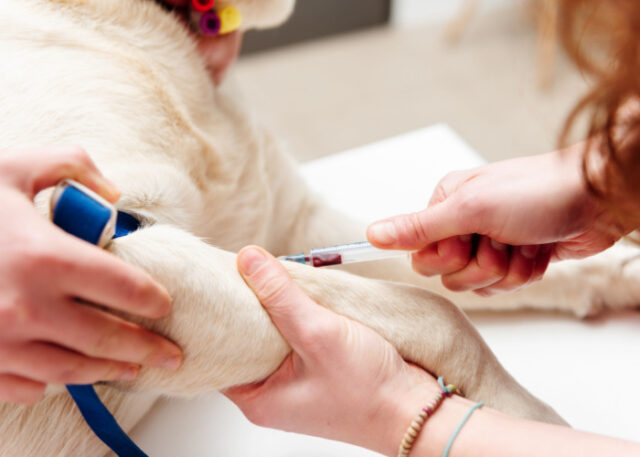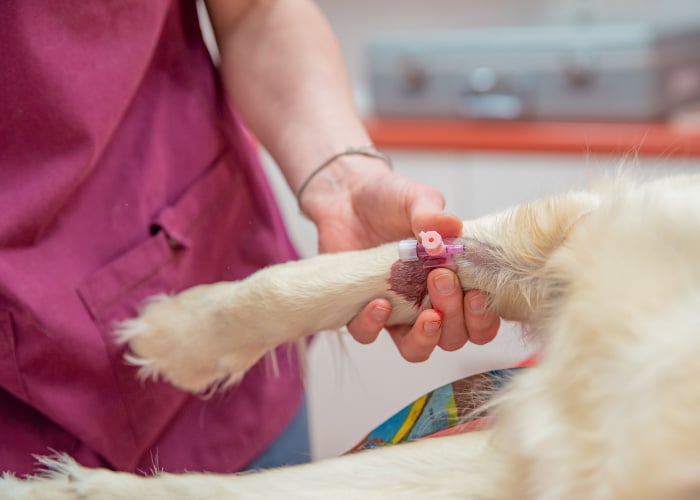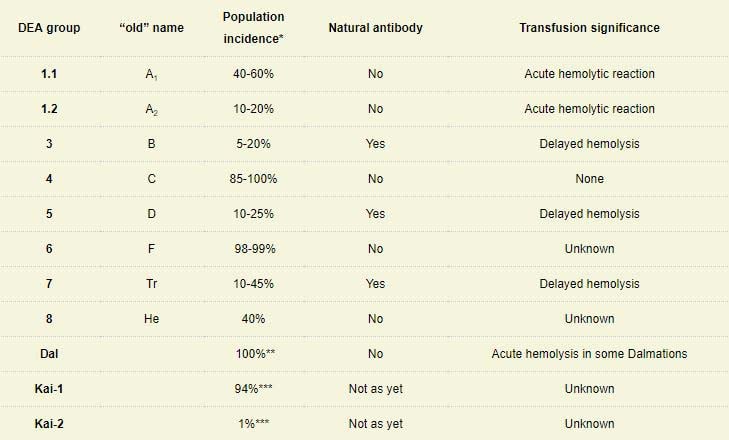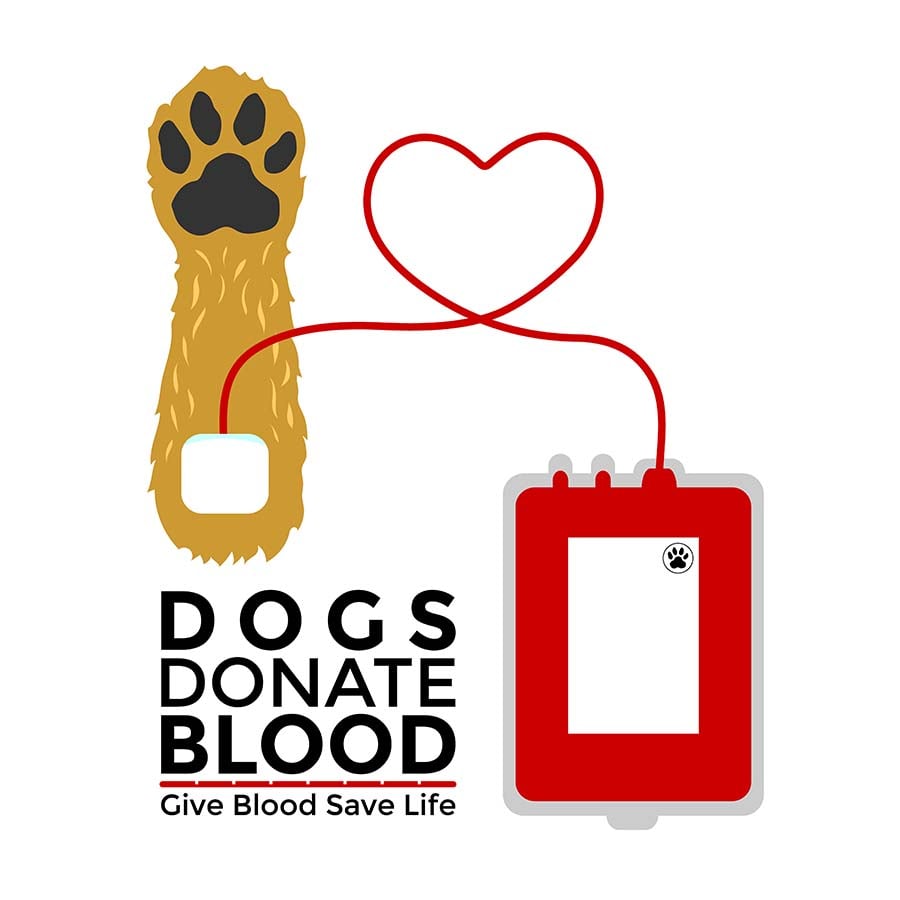
Table of Contents
There are many ways to help dogs in need—voluntary work, shelter adoption, feeding the strays…
But have you ever thought of donating blood?
No, not yours, but your dog's.
The demand for canine blood has been increasing for the past 20 years, with all the technological advancements in veterinary medicine. However, the supply wasn't able to keep up.
The supply has constantly declined and was further aggravated when the COVID-19 pandemic hit the world in 2020.
But now that we're out in the clear (hopefully,) can dogs be blood donors again? Is it now safe?
If you're planning to bring Fido along your philanthropic journey of extending the lives of those in need not by money but by something more precious, read along!
In this article, we'll cover the basics of canine blood donation, the process dogs go through, and the benefits it can give you and your furry pal.
Let's get to it!
Can Dogs Be Blood Donors?
To answer this question, yes, dogs can be blood donors.
Here's a trivia: The first ever successful blood donation and transfusion was not from human to human but from dog to dog. It was performed by physician Richard Lower and happened in 1665 in England.
Cool, right?
However, not all dogs can be blood donors. Veterinarians consider several factors (a.k.a. requirements) before giving the “Go” signal to someone who wants to get their dogs to donate blood.
Your dog's weight is also a deciding factor as to which type of blood donation program he would best fit into—the “Full Pint” or the “Half Pint” program.
But before we delve into that, let's address first the most sensible question any dog owner would ask—safety.
Is it safe for my dog to donate blood?
Yes, it is perfectly safe for your dog to donate blood. It's even beneficial for them (and for you, too!)
It's nothing unusual if your dog feels tired or nauseous afterward, just like you would after donating blood. It's also normal to see minor swelling or a bit of soreness; those should go down after a few hours.
Also, part of the donation process is monitoring afterward so the vets know your dog is in a good place before they let you go.
There have been zero reports of serious complications from canine blood donation. No special post-donation care is also needed except for a bit of rest.
Your dog should be able to resume his usual routine the next day of donating blood.
We know it's safe… but won't it be painful?
It may sting a little, as you would imagine, but it's nothing that our dogs can't handle, especially if they're used to going to the vet.
Also, most programs use local anesthetic cream to numb or minimize the sensation on the extraction site.
The benefits of donating blood
Different animal blood centers feature different benefits they give blood donors. Some give treats and pounds of dog food; others give toys, accessories, and memorabilia that brand your dog as a ‘blood superhero.'
They also provide free health services that are otherwise costly if you had them done at a regular vet check-up.
Vaccinations, preventative medications, a full annual physical exam, and complete blood work, including screening and typing, will be done free of charge.
This means you won't have to shell out even a single dollar to have your dog's health thoroughly checked.
Some donors also receive reimbursement for future care and a lifetime of free blood transfusion if needed.
For Fido, free check-ups, free stuff, and possibly free health services even in the future… what's not to like?
But perhaps the most important benefit is knowing that you and your dog can save lives—up to three dogs' lives, to be exact.
Canine Blood Donation: What You Need to Know
Requirements
As mentioned, not all dogs can pass as blood donors.
While different blood donation programs have their own set of requirements to screen, here are the standard qualifications most look for in the perfect dog blood donor:
- Generally in good health
- Between 1 and 9 years old
- Weighs at least 25 pounds to over 50 pounds (as long as the dog is not overweight)
- With up-to-date vaccinations, including distemper, parvovirus, parainfluenza, hepatitis, and rabies
- Not on any medication except for tick, flea, and heartworm prevention
- Hasn't had any treatment or blood transfusion within a certain period
- For female dogs, some programs require no history of pregnancy
Apart from their physical health, your dog should also have a good temperament. He should be:
- Friendly, calm, and confident
- Obedient
- Able to lie down for 5 to 10 minutes
- Excited to meet new people and pets
If you are thinking of having your dog donate blood, contact your veterinarian to find the best program or the nearest blood donation center to help you get started.
Step-by-Step Process
This depends on the center or program you are signing up for, but for the most part, it will take days before your dog can donate his blood.
Let's break down the whole step-by-step process in this section.
Signing Up
Assuming that you have done your research and have vetted the best program or center for your dog, the first thing to do is sign up.
You can visit their physical location, but the most convenient way is to check out their website and register there.
Here's one example of a North American Veterinary Blood Bank sign-up form.
You can also click this list of canine blood banks in the United States.
If these are too far from where you live or if you prefer to help your local community, some veterinary hospitals have blood donation programs that you might want to check out.
Meet & Greet
After signing up, someone from the program or center should contact you to set up a meet & greet.
Here, not only will your dog get to familiarize himself with the new place and people, but he will also undergo additional screening to see if he is fit to donate blood.
They will check if your dog is too anxious, too excited, or just obedient enough to be the perfect blood donor.
Your dog will also undergo an annual physical exam, and he will have a small sample of blood drawn for further screening and typing.
They will test the blood for possible blood-borne diseases, like Lyme disease, Brucellosis, Rocky Mountain Spotted Fever, Ehrlichiosis, etc.
If any one of these is present in your dog's blood, sadly, he's not considered fit to donate.
This is crucial for the blood donation program and for you because here, you'll ultimately know if your dog is as healthy as a horse or if there's an underlying condition you weren't aware of.
You'll also get to know his blood type (yes, dogs have blood types! More on this later.)
If the program has it, as some do, they can also give updated vaccinations to get your dog up to speed before the donation.
Actual Canine Blood Donation
If your dog passes the screening and is deemed fit, you will be called back to the center to have your dog's blood drawn.
This only takes a few minutes, and you will be with your dog the whole time to comfort him.
After another set of standard health checks, your dog will be prepped for donation.
The extraction site is often at the large jugular vein, but some may still do this at the cephalic vein in the forearm. The area will be sanitized and shaved when necessary.
Some centers also apply a local anesthetic cream to minimize any discomfort your dog may feel, especially if it's their first time.
While most dogs won't require it, the overly excited ones might need to be lightly sedated to make the blood extraction seamless.
Approximately 400 to 450 milliliters of blood are drawn out per donation, which takes about 5 to 10 minutes of extraction.
Watch the video below for the actual blood donation of one good doggo named Aegis:
After Care
After the procedure, the needle wound will be wrapped up, and your dog will be given all the love and belly rubs he deserves for being a superhero (plus some goodies, too!)
No special care is necessary after a blood donation except for a rest.
If necessary, some centers will hook your dog up for an IV fluid to help them hydrate and replace blood loss.
What Happens to the Donated Canine Blood
A donated whole blood (blood complete with red and white cells, platelets, and plasma) only lasts for 28 days.
This is why most collected blood is processed using a centrifuge to separate its different components into two: the red blood cells and the plasma.
Once mixed with a nutrient solution, red blood cells have an extended shelf life of 42 days, while the plasma can be frozen fresh and last for years.
Also, most common canine blood transfusions only require either red blood cells or plasma.
Check out how a bag of donated blood is processed in a laboratory by watching the video below:
Cases Where Dogs Need Blood Donation
While blood transfusion is mostly needed in emergency cases, other long-term diseases also benefit from this treatment.
If you know of a friend's dog having one of the following conditions (among others), you and your canine donor might help save their life.
- Anemia
- Cancer-related blood loss
- Bone marrow disease
- Internal bleeding
- Parvo
- Inherited bleeding disorders
- Hemophilia
Did You Know—Dogs Have Blood Types?
Yes, dogs have blood types, too. But instead of ‘type,' it's more classified as a ‘group.'
Currently, there are more than 12 blood groups identified in dogs.
Is this important to know? As a matter of fact, yes, it is, especially in case of emergencies.
Just like in humans, certain blood types in dogs are not compatible and might cause grave problems when accidentally mixed through transfusion.
Dog breeds that are usually DEA 1.1 positive are Golden Retrievers and Labradors, while Boxers, German Shepherds, Dobermans, and Pit Bulls are mostly DEA 1.1 negative.
Dogs that only have a DEA 4 blood type are considered universal donors.
Please read our article below to learn more about dog blood types!
READ MORE: Do Dogs Have Blood Types? (And Other Related Facts)
Can Dogs be Blood Donors – FAQs
Every when can my dog donate blood?
Dogs that weigh at least 40 pounds can safely donate a half-pint of blood every 4 to 6 weeks, while larger dogs that weigh over 50 pounds can donate a pint of blood every eight weeks.
In comparison, the recommended time frame for humans to donate whole blood is at least every 56 days.
Amazingly, dogs can replenish 1/3 of their donated blood immediately and be able to regenerate the rest in just a matter of days.
Can dogs donate blood to cats?
Yes, dogs can donate blood to cats.
This practice is called xenotransfusion, or blood transfusion from one species to another.
A study published in 2022 even highlighted that transfusing dog blood to a patient cat causes no harm and is beneficial for several reasons, some being that blood typing is not necessary anymore and that it's much easier to get donated blood from dogs instead of from cats.
RELATED: Aww! This Dog Donates Blood to Help Kittens
How much blood can a dog donate?
The quantity of donated blood a dog can give depends on its weight.
Generally, 15% of a dog's blood volume can be safely donated, but it can go up to 20%, provided an IV fluid is given immediately afterward.
To follow this principle, accurately knowing a dog's blood volume, estimated at 90 ml/kg, is important.
Multiply 90ml to your dog's body weight in kilograms, and then you should get the total blood volume.
To get the recommended donated blood, multiply that blood volume by 0.15 (15%) or 0.20 (20%).
Read this guide to learn more about this.
Yes, Dogs can be Blood Donors!
Canine blood donation is nothing new, yet it is still widely necessary to save lives and to support more studies and research in veterinary medicine.
Be a blood superhero!
I hope this article answers your question, “Can dogs be blood donors?” and provides useful information.
Have you and your dog had experience donating blood already? How did it go?
Please share it with us in the comments section!
You can also check out our recommended articles linked below.















